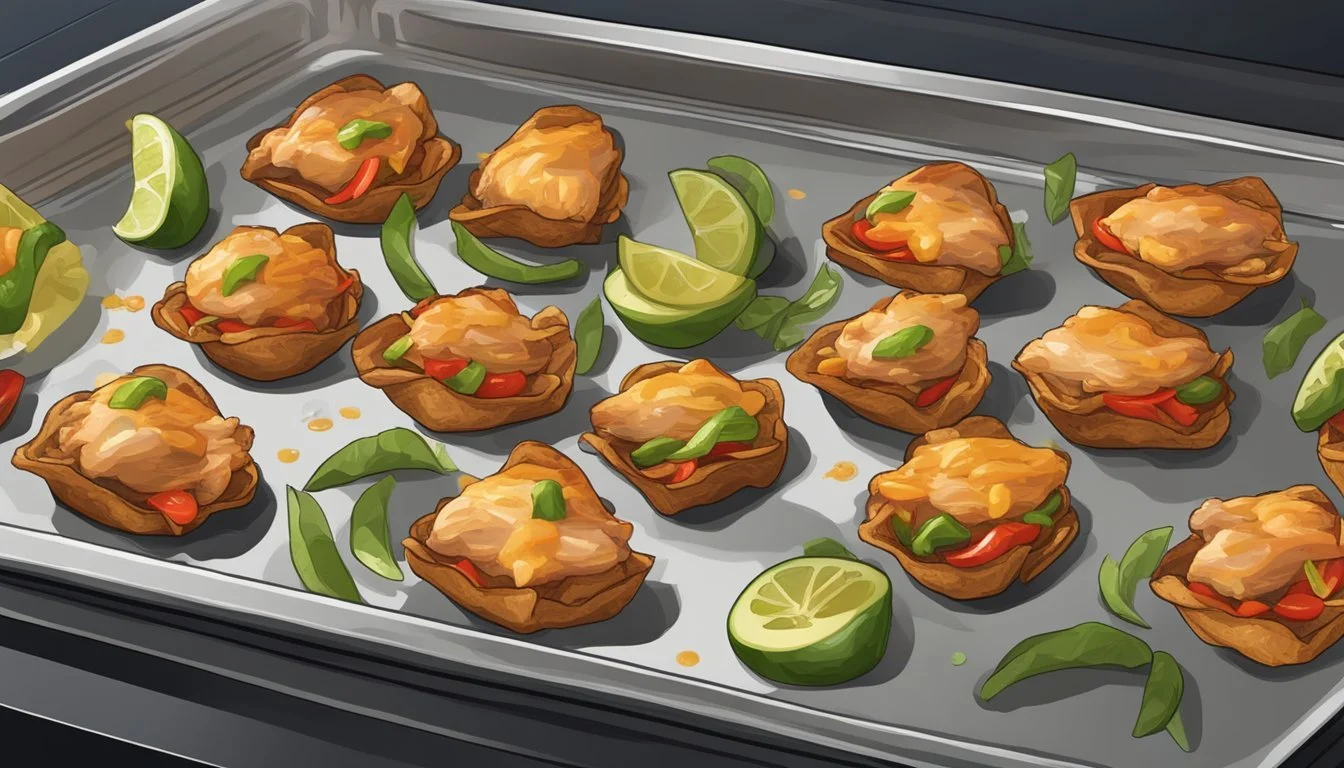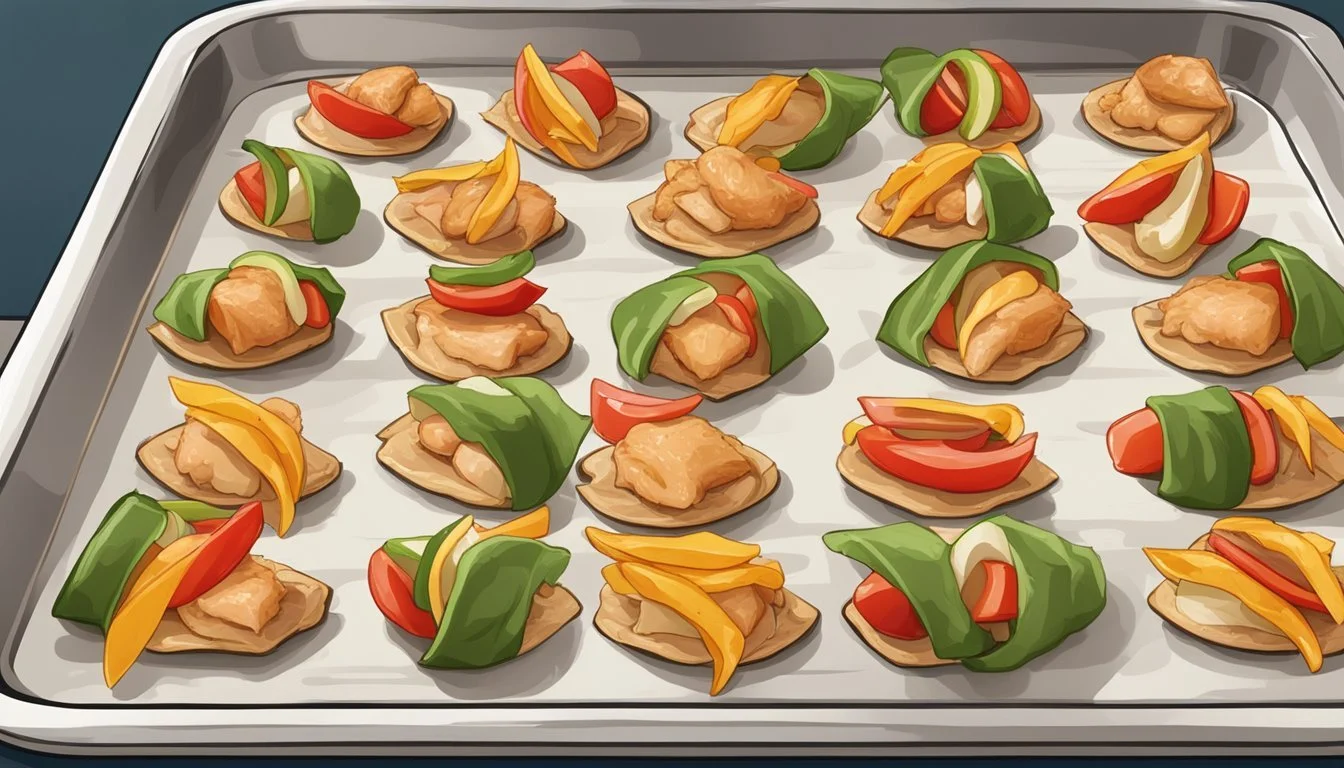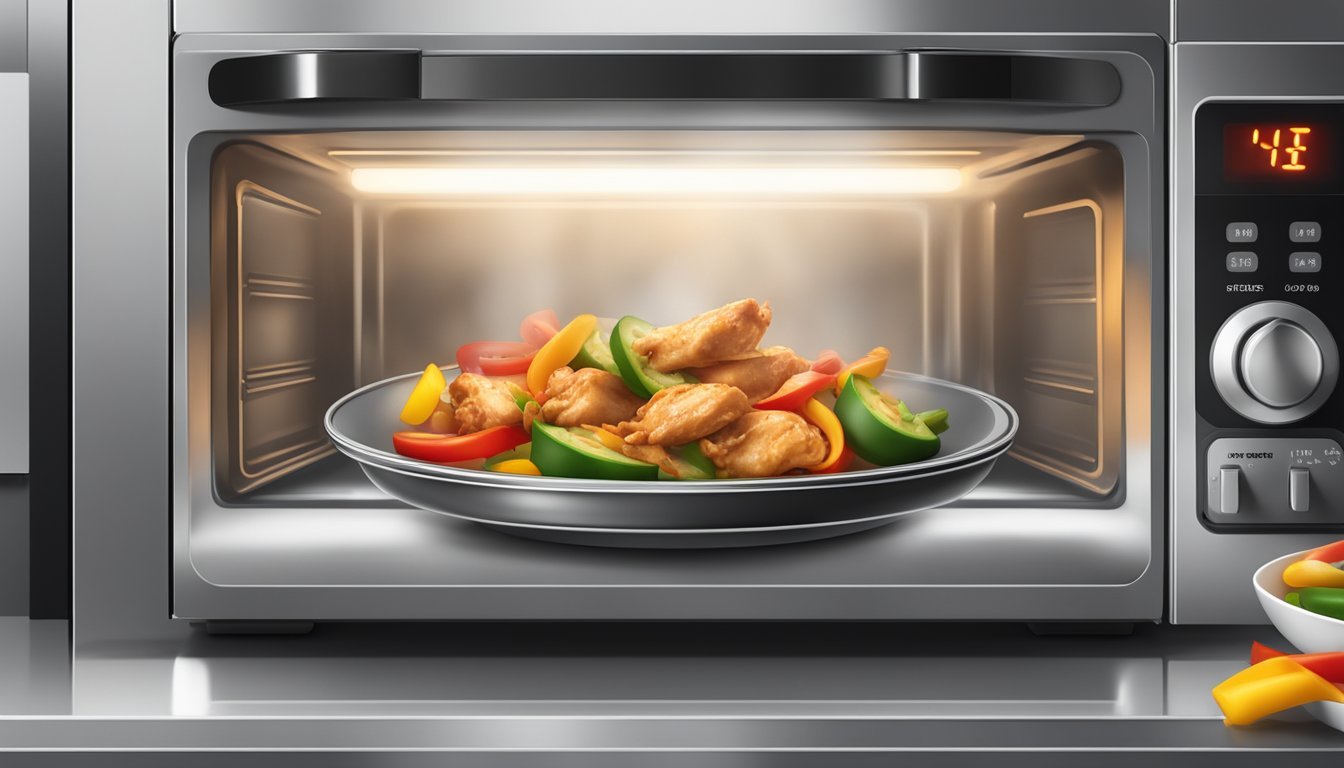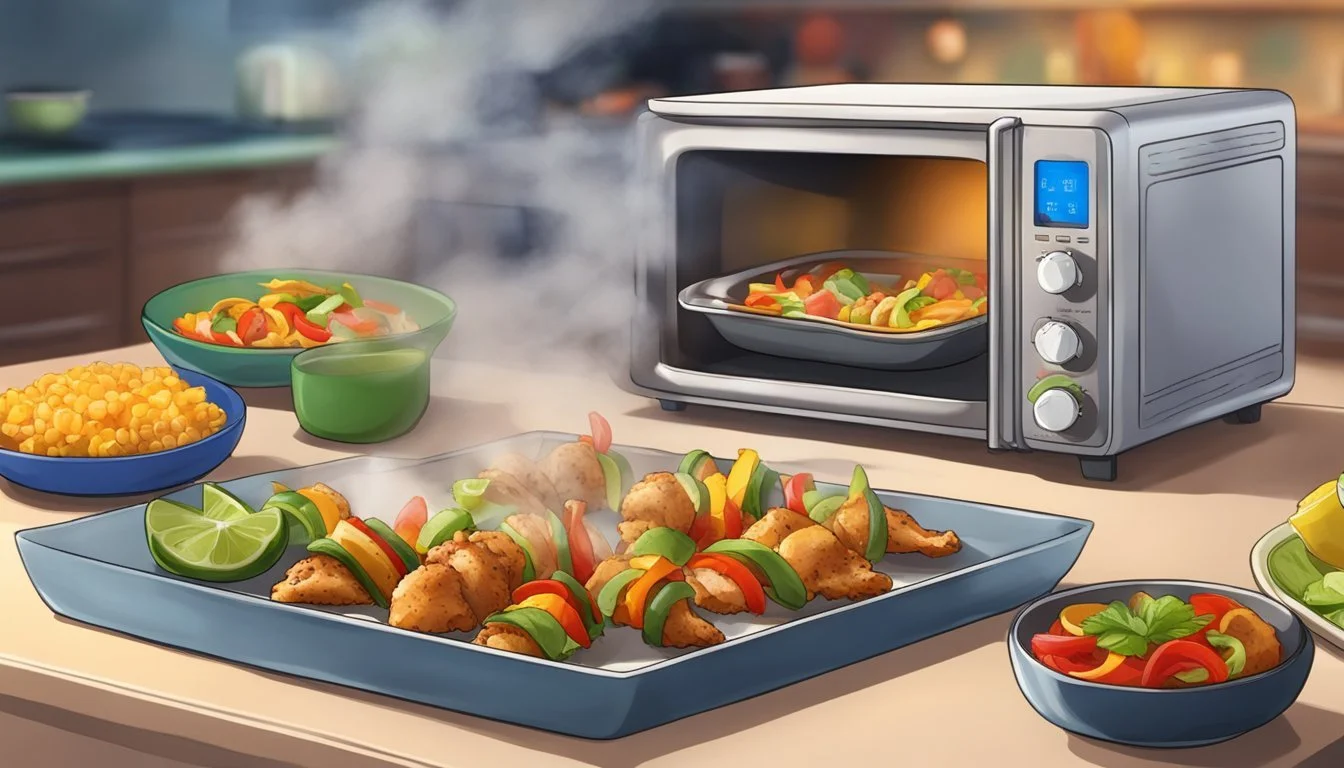How to Reheat Chicken Fajita Bites for Optimal Flavor and Texture
Reheating chicken fajita bites can be straightforward and quick, ensuring you enjoy their robust flavors and tender textures with minimal fuss. One of the most effective methods is using a skillet on the stovetop: heat some oil, add the fajita bites, and cook for a few minutes while stirring occasionally to avoid sticking. This method not only warms the chicken evenly but also keeps it moist and flavorful.
For those in a hurry, the microwave offers a rapid solution. Place your chicken fajita bites on a microwave-safe plate, cover them loosely, and heat on medium power for a couple of minutes. This technique requires minimal effort and is perfect for a quick lunch or dinner fix.
The oven is another excellent option for reheating, especially if you want to maintain the dish’s original texture. Preheat your oven to 356 degrees Fahrenheit, cover the bites with foil, and warm them for about 20-30 minutes. This method is perfect for larger portions and ensures the fajita bites are thoroughly heated without drying out.
Understanding Fajitas
Fajitas are a popular Tex-Mex dish known for combining grilled meats, typically chicken or beef, with sautéed vegetables like onions and bell peppers, all wrapped in a soft tortilla. Their origin and components are essential knowledge for any fan of this flavorful meal.
Tex-Mex Dish Origins
The origin of fajitas traces back to the Rio Grande Valley in Texas. Ranch workers used cheaper cuts of beef, like skirt steak, which they marinated, grilled, and sliced. Initially a humble meal, fajitas gained popularity and evolved into various forms, including chicken fajitas. In the 1980s, restaurants began serving fajitas sizzling on hot skillets, amplifying their appeal. Today, the dish boasts a rich history as a staple in Tex-Mex cuisine, enjoyed for its distinctive blend of grilled meats and sautéed vegetables.
Key Components of Chicken Fajitas
Chicken fajitas rely on several key ingredients to create their signature taste. Chicken breast or thighs, marinated for tenderness and flavor, serve as the main protein. Essential vegetables include onions and bell peppers, which add sweetness and crunch.
Cooking methods involve grilling or pan-searing to achieve the characteristic smoky flavor. Flour tortillas are traditionally used, but corn tortillas are an alternative for those seeking different textures. Common seasonings include cumin, chili powder, garlic, and lime juice, ensuring the dish packs a flavorful punch.
Ultimately, the blend of marinated chicken, vibrant vegetables, and spices wrapped in a soft tortilla defines the essence of chicken fajitas.
Proper Storage for Leftover Fajitas
Effective storage of leftover fajitas is crucial to maintain their flavor and ensure food safety. This involves using airtight containers, proper refrigeration, or freezing techniques to prevent bacterial growth and spoilage.
Airtight Container Benefits
Using an airtight container to store leftover fajitas is essential. It minimizes exposure to air, which can cause the food to dry out or become contaminated. Additionally, airtight containers prevent the spread of odors throughout the refrigerator.
Plastic airtight containers are popular due to their durability and ease of use. They come in various sizes, making it easy to store different quantities of leftovers. Ensure the container is completely sealed to keep the fajitas fresh for longer periods.
Refrigeration Practices
Refrigeration is a common method to store leftover fajitas safely. Place the fajitas in an airtight container before putting them in the fridge. This will help to maintain their moisture and prevent bacteria from multiplying at room temperature.
It's best to refrigerate the fajitas within two hours of cooking to avoid the risk of bacterial growth. The refrigerator should be set at or below 40°F (4°C) to keep the food in a safe temperature range. Leftover fajitas can typically be stored in the refrigerator for up to 3-4 days.
Freezer Storage Tips
Freezing leftover fajitas is an excellent option if you don't plan to consume them within a few days. Before freezing, separate the components such as tortillas, meat, and vegetables. This prevents the tortillas from becoming soggy.
Place the fajitas in a freezer-safe airtight container or heavy-duty freezer bags. Label the container with the date to keep track of storage time. Frozen fajitas can maintain their quality for up to 2-3 months. For best results, thaw them in the refrigerator before reheating.
By following these practices, you can enjoy safe and delicious leftover fajitas while minimizing waste. Proper storage techniques not only safeguard your food but also retain its taste and texture.
Pre-Reheating Preparation
Proper preparation ensures that leftover chicken fajitas remain tender and flavorful after reheating. Focus on thawing frozen fajitas, allowing them to rest at room temperature, and paying attention to the specifics of the chicken fajita mix.
Thawing Frozen Fajitas
When reheating frozen chicken fajitas, ensure they are fully thawed to maintain quality. One effective method is to transfer the fajitas from the freezer to the refrigerator and let them thaw overnight.
For a quicker option, place the sealed fajitas in a bowl of cold water, changing the water every 30 minutes. This should thaw them in a couple of hours.
Avoid using hot water or leaving them on the counter for long, as it can lead to uneven thawing or bacterial growth. Once thawed, proceed to the next steps of preparation.
Room Temperature Resting
Letting the chicken fajitas rest at room temperature before reheating can result in more even warming. Take the thawed chicken fajitas out of the refrigerator about 30 minutes before reheating.
This reduces the temperature difference between the fajitas and the reheating method, leading to more consistent results.
If pressed for time, letting them sit out for even 10-15 minutes can make a noticeable difference in texture and tenderness. Always ensure the fajitas are covered or placed in a clean container to avoid contamination.
Chicken Fajita Mix Specifics
Chicken fajita mix typically includes bell peppers, onions, and various seasonings. To ensure that all components reheat properly, distribute the ingredients evenly on the reheating vessel.
If the mix seems dry, consider adding a tablespoon of water or broth before reheating. This helps in retaining moisture and can enhance the overall flavor.
When dealing with particularly delicate vegetables, like bell peppers, be mindful of their quick cooking time to avoid overcooking. Adjust the reheating time if necessary to maintain the integrity of the ingredients.
Reheating Methods Overview
Reheating chicken fajita bites can be done using several methods, including the oven, stovetop, microwave, and air fryer. Each technique has its own benefits and can help retain the flavor and texture of the fajitas.
Oven Reheating Technique
Using the oven to reheat chicken fajita bites ensures even heating. Preheat the oven to 350°F (175°C). Place the fajita bites on a baking sheet lined with aluminum foil. If needed, add a tablespoon of olive oil to keep the meat moist. Cover the tray loosely with another sheet of foil to prevent drying out. Heat for approximately 15-20 minutes, checking occasionally to avoid overcooking.
Stovetop Reheating Strategy
The stovetop method offers quick heating while retaining the fajitas' texture. Use a large skillet or cast iron pan over medium heat. Add a bit of olive oil or a splash of water to prevent sticking. Once the oil shimmers, add the fajita bites and stir frequently. Reheat for about 5-7 minutes or until thoroughly warmed. Stirring ensures even heating and prevents burning.
Microwave Reheating Tips
The microwave method is the fastest way to reheat chicken fajita bites. Place the bites in a microwave-safe container. Cover loosely with a microwave-safe lid or plastic wrap to maintain moisture. Heat on medium power for 2-3 minutes, stirring halfway through. Adjust time based on the quantity, ensuring the food heats evenly without drying out.
Alternative: Air Fryer Method
For a crispy finish, the air fryer is an excellent choice. Preheat the air fryer to 350°F (175°C). Arrange the fajita bites in a single layer to avoid overcrowding. Air fry for about 5-7 minutes, shaking the basket halfway through to ensure even cooking. This method adds a crispiness that other techniques might not provide.
Best Practices for Optimal Taste and Texture
Reheating chicken fajita bites requires attention to maintaining moisture, avoiding overcooking, and ensuring even heat distribution. These practices help achieve tender, flavorful bites with optimal texture.
Heat Distribution and Control
Using proper heat distribution methods is crucial for ensuring even reheating without hot spots. A medium heat setting is recommended on the stovetop or oven.
On the stovetop: Use a large skillet or cast iron pan and add a small amount of olive oil. Heat it until it shimmers before adding the fajita bites. This helps in distributing heat evenly and prevents sticking.
In the oven: Preheat to 350°F (175°C). Spread the fajita bites evenly on a baking sheet lined with aluminum foil. Covering the bites with another layer of foil helps trap heat and circulate it more uniformly.
Preventing Moisture Loss
Maintaining the fajita bites' moisture is essential for preserving their taste and texture. Losing moisture can make the chicken dry and unappetizing.
Microwave: Use a microwave-safe container and cover the fajita bites loosely with microwave-safe plastic wrap or a damp paper towel. This minimizes moisture loss while heating.
Stovetop and Oven: Adding a small amount of liquid, such as broth or water, to the reheating pan can help retain moisture. It's effective to cover the pan or baking sheet to trap steam, keeping the bites moist.
Avoiding Overcooking
Overcooking can lead to tough and dry chicken, diminishing the deliciousness of your fajita bites. Using controlled and moderate heat prevents this issue.
Stovetop: Stir the fajita bites frequently, reheating them for only a few minutes until they reach a safe internal temperature of 165°F (74°C). Avoid leaving them on the heat for too long.
Oven: Reheat based on portion size, checking the bites periodically. Using a food thermometer can help ensure they reach the right temperature without being overcooked.
Implementing these best practices ensures your reheated chicken fajita bites remain tender, juicy, and flavorful, providing an enjoyable dining experience.
The Role of Cooking Accessories
Utilizing the right cooking accessories is essential for reheating chicken fajita bites effectively. Key tools include aluminum foil, microwave-safe materials, and various types of skillets and pans.
Aluminum Foil and Its Uses
Aluminum foil plays an important role in the reheating process by retaining moisture. When chicken fajita bites are wrapped in foil and heated in the oven, it prevents them from drying out.
To reheat, preheat your oven to 350°F (175°C). Wrap the chicken fajita bites in aluminum foil and place them on a baking sheet. Bake for around 10-15 minutes, ensuring the bites are heated thoroughly. This method ensures even heating without overcooking.
Microwave-Safe Materials
For those who prefer using a microwave, relying on microwave-safe materials is crucial. A microwave-safe plate or microwave-safe plastic wrap is recommended for reheating chicken fajita bites.
Place the bites on a microwave-safe plate. Cover them with microwave-safe plastic wrap, leaving a small corner open to allow steam to escape. Heat in short intervals of 30 seconds, checking each time to ensure they don't overcook, and stir between intervals for even reheating.
Skillets and Non-Stick Pans
Using a skillet or non-stick pan offers a quick and effective way to reheat chicken fajita bites. A cast iron skillet or regular frying pan works well, preserving the texture and flavor of the bites.
Preheat the pan on medium heat. Add a small amount of olive oil or water to prevent sticking. Place the chicken fajita bites in the pan and heat for a few minutes, flipping them occasionally until they're evenly warmed. This method helps restore some of the original sizzle and flavor.
Each of these accessories—aluminum foil, microwave-safe materials, and skillets or non-stick pans—offers a convenient and effective way to reheat chicken fajita bites, preserving their taste and texture.
Serving and Presentation
Reheating chicken fajita bites is just the beginning. Proper serving and presentation are key to enhancing flavor and creating a visually appealing meal.
Arranging on a Tray or Plate
Start by placing the reheated chicken fajita bites on a tray or plate in a single layer. This prevents the bites from becoming soggy and ensures even warmth.
Using a traditional sizzle plate can mimic restaurant-style presentations, keeping the bites hot. Alternatively, a standard tray or plate works well. Separate the chicken, vegetables, and any additional ingredients for a neat, organized look.
Garnishing with Fresh Toppings
Fresh toppings add a burst of color and flavor to the dish. Lettuce, cilantro, and sliced avocado are excellent choices. Arrange these toppings around the chicken fajita bites to create a vibrant, eye-catching presentation.
Drizzle salsa or guacamole over the bites for extra zest. Use condiments like sour cream sparingly to avoid overwhelming the flavors.
Pairing with Side Dishes
Complement the chicken fajita bites with traditional side dishes such as Mexican rice and refried beans. These sides enhance the tortillas and flavors of the main dish.
Consider adding a small bowl of salsa and guacamole on the side. To keep cold ingredients fresh, serve them separately from the hot bites. This practice ensures all elements taste their best.
Final Thoughts on Reheating Chicken Fajitas
When reheating chicken fajitas, minimizing effort while retaining flavor and texture is key.
Preheating is essential. Whether using an oven, air fryer, or stovetop, ensure the appliance reaches the proper temperature before adding the fajitas. Aim for 350°F (175°C) for ovens and air fryers.
To reheat in the oven, spread the components on a baking sheet. Cover loosely with aluminum foil to preserve moisture. Use a splash of liquid if needed.
For stovetop reheating, add 1-2 tbsp of vegetable oil to a pan and heat. Toss the fajitas in the pan for 3-4 minutes, stirring constantly to avoid sticking.
Air fryers are versatile and can be preheated to 350°F. Arrange fajita portions in a single layer for even heating.
Maintaining crispiness can be challenging. Use cooking spray sparingly to avoid excess oil. For added texture, reheat in short intervals, checking frequently.
Proper storage is crucial to prevent foodborne illness. Store leftovers in airtight containers and refrigerate promptly. Reheat only once to maintain food safety.
Reheating on a grill can add a smoky flavor. Use a medium heat setting and cover with a lid to steam and heat evenly.
In conclusion, with these methods, reheating chicken fajitas can be done with minimal effort while retaining their delicious taste and texture.








